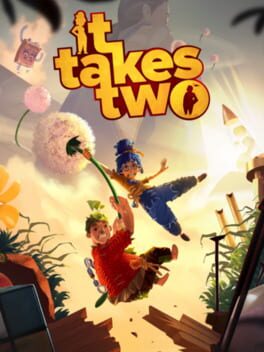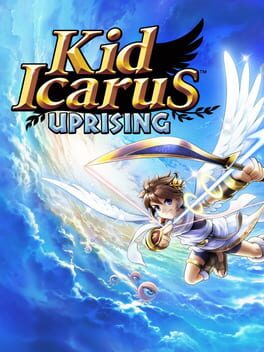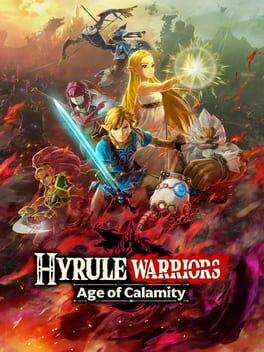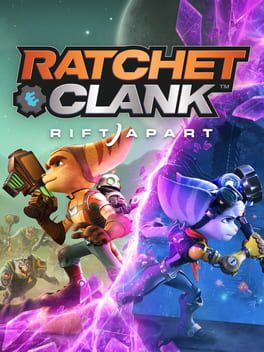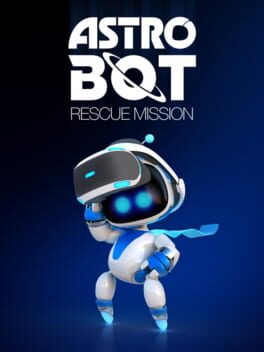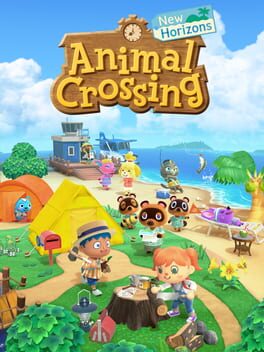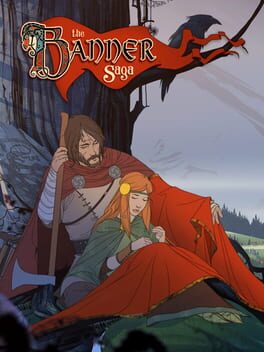WallsyBanger
BACKER
39 Reviews liked by WallsyBanger
This is it. This is the one.
Pokemon romhacks are omnipresent. There are at least 150 on Backloggd and over 1000 on PokeHarbor. Most often, fangames attempt huge changes to their base games, sometimes creating an entirely new adventure, but the three versions of Shin Pokemon are much more restrained, focusing instead on surgical alterations to Gen I that largely maintain the original experience as opposed to supplanting it.
This has been attempted before, most notably with Pokemon Red++, but even that sought to modernize Gen I. There's obviously nothing wrong with that, but Shin Pokemon isn't interested in adding abilities, held items, or new evolutions. Rather, it's all about making the definitive Gen I experience.
The full list of changes can be found here, so I'm just going to go over the major selling points. A toggleable Hard Mode means the trainers actually make intelligent decisions now. Unless you overlevel, you can't just spam attacks and expect to win. Speaking of overlevelling, there are fantastic options that allow customization of your game, including auto-trainer level scaling, trainer team randomization (which does not affect key battles such as gym leaders), and wild encounter randomization. What's key about this is that it's not your standard randomizer, you're not going to run into a Mew on Route 2. Instead, Pokemon are swapped with a comparable counterpart with similar stats and evolution status. For example, between Pallet Town and Viridian City, the Pidgeys and Rattatas in my game were replaced with Vulpixes and Mankeys. The randomization is consistent, tied to your save file so it's not constantly shuffling. This kind of replacement creates an engaging remix of Gen I while still feeling more like an official release than a wacky hack. Now this does mean that sometimes you'll fish up a Charmander with a Super Rod, but all in all I thought it was very well-implemented.
The Select button gets a lot more to do here, showing an extra options menu (where you can turn Hard mode, better trainer AI, obedience level caps, and Nuzlocke mode on and off), swapping between a second inventory (THIS IS HUGE!!), auto-selecting HM moves, and, when combined with another button like a hotkey), using your bike or rod without requiring any menu navigation. You can also hold B to run, doubling your speed, but this also works while surfing AND while biking! This is arguably my favorite improvement, as it's become second nature to increase the speed of Pokemon games ever since the Dodrio Mode in Pokemon Stadium's Game Boy Tower. What I always disliked about that, however, was mangling the god-tier OST. With the ability to run and to bike at 2x speed, I felt no need to rush any more than that. This is the ideal speed for Gen I, they absolutely nailed it.
Moves get a little bit of a makeover here, but nothing crazy. The most critical change here is that outside of a Pokemon's 4 move slots, a fifth "Field Move" slot has been created, allowing a Pokemon to learn a single HM for overworld use only. I LOVE not having to sacrifice an attack slot for Cut, this is an incredible inclusion. Beyond that, moves in-battle are more repaired than revised. Focus Energy and Rage actually do what they're supposed to, multi-turn attacks like Wrap and Fire Spin telegraph the final turn and allow switching out in order to avoid infinite trapping, though the game also allows running from a trainer battle (counts as blacking out) if you legitimately get stuck.
There are a couple of new features added, but they're tastefully done and don't drastically affect the original experience. If you're interested, I'd highly recommend reading through the full breakdown of alterations and giving the game a shot. This is the most I've enjoyed Gen I since the Game Boy days, and it deserves all the attention and praise it can get.
Pokemon romhacks are omnipresent. There are at least 150 on Backloggd and over 1000 on PokeHarbor. Most often, fangames attempt huge changes to their base games, sometimes creating an entirely new adventure, but the three versions of Shin Pokemon are much more restrained, focusing instead on surgical alterations to Gen I that largely maintain the original experience as opposed to supplanting it.
This has been attempted before, most notably with Pokemon Red++, but even that sought to modernize Gen I. There's obviously nothing wrong with that, but Shin Pokemon isn't interested in adding abilities, held items, or new evolutions. Rather, it's all about making the definitive Gen I experience.
The full list of changes can be found here, so I'm just going to go over the major selling points. A toggleable Hard Mode means the trainers actually make intelligent decisions now. Unless you overlevel, you can't just spam attacks and expect to win. Speaking of overlevelling, there are fantastic options that allow customization of your game, including auto-trainer level scaling, trainer team randomization (which does not affect key battles such as gym leaders), and wild encounter randomization. What's key about this is that it's not your standard randomizer, you're not going to run into a Mew on Route 2. Instead, Pokemon are swapped with a comparable counterpart with similar stats and evolution status. For example, between Pallet Town and Viridian City, the Pidgeys and Rattatas in my game were replaced with Vulpixes and Mankeys. The randomization is consistent, tied to your save file so it's not constantly shuffling. This kind of replacement creates an engaging remix of Gen I while still feeling more like an official release than a wacky hack. Now this does mean that sometimes you'll fish up a Charmander with a Super Rod, but all in all I thought it was very well-implemented.
The Select button gets a lot more to do here, showing an extra options menu (where you can turn Hard mode, better trainer AI, obedience level caps, and Nuzlocke mode on and off), swapping between a second inventory (THIS IS HUGE!!), auto-selecting HM moves, and, when combined with another button like a hotkey), using your bike or rod without requiring any menu navigation. You can also hold B to run, doubling your speed, but this also works while surfing AND while biking! This is arguably my favorite improvement, as it's become second nature to increase the speed of Pokemon games ever since the Dodrio Mode in Pokemon Stadium's Game Boy Tower. What I always disliked about that, however, was mangling the god-tier OST. With the ability to run and to bike at 2x speed, I felt no need to rush any more than that. This is the ideal speed for Gen I, they absolutely nailed it.
Moves get a little bit of a makeover here, but nothing crazy. The most critical change here is that outside of a Pokemon's 4 move slots, a fifth "Field Move" slot has been created, allowing a Pokemon to learn a single HM for overworld use only. I LOVE not having to sacrifice an attack slot for Cut, this is an incredible inclusion. Beyond that, moves in-battle are more repaired than revised. Focus Energy and Rage actually do what they're supposed to, multi-turn attacks like Wrap and Fire Spin telegraph the final turn and allow switching out in order to avoid infinite trapping, though the game also allows running from a trainer battle (counts as blacking out) if you legitimately get stuck.
There are a couple of new features added, but they're tastefully done and don't drastically affect the original experience. If you're interested, I'd highly recommend reading through the full breakdown of alterations and giving the game a shot. This is the most I've enjoyed Gen I since the Game Boy days, and it deserves all the attention and praise it can get.
Stray
2022
Okay. There's some stuff here that doesn't work. Some of the most basic interactions feel awkward, including initiating dialogue with NPCs. I didn't feel the sense of freedom that I wanted to, being guided by on-screen button prompts constantly, and only able to move about in a way that assisted the set pieces of the campaign.
And yes still, despite this, I adored my time with Stray. The sheer vibrancy in its setting alone was worth the modest playtime needed to complete its story, and the intriguing dystopian plot did plenty to keep me wondering what had led this world to be in the state it was in.
Stray is a decent enough game, but it's a wonderful audiovisual experience.
And yes still, despite this, I adored my time with Stray. The sheer vibrancy in its setting alone was worth the modest playtime needed to complete its story, and the intriguing dystopian plot did plenty to keep me wondering what had led this world to be in the state it was in.
Stray is a decent enough game, but it's a wonderful audiovisual experience.
It Takes Two
2021
Kid Icarus: Uprising
2012
This game is an absolute treat. If you haven't heard of it, because not many people have, it's a game by the creator of Papers Please where you investigate the mystery of the Obra Dinn, an East India Company ship where all hands were lost at sea. You have a list of the crew, a few photos, and have to piece together who is who and how they died by traveling back to the moment of their death using a magical watch. Since people don't usually shout their names, what killed them, and who all the observers are from left to right, you have to use everything from uniforms to marks on the wall to make your deductions. The amount of clues and the cleverness of their placement is jaw dropping, and even minor crew members usually a solid clue to go off. The problem is it's "usually" instead of "always". While I didn't have to check a guide, I tallied up my solutions and only 3/4ths were done with direct deduction, and the rest were "I know your position or your race, and I'm sure of a few other people, so I'll just swap the information around until the game clicks into place". The game won't let you guess everyone, as you need to solve three at a time for the entries to lock into your solution notebook, but it's also loose enough to suggest the game is fully aware that some clues are way too hidden away and a couple characters are too ambiguous to be decisive until the end. The game's pacing certainly doesn't help, as you're forced to experience every memory before you're able to freely investigate. The other black mark on the game is its interface, presented as a book you're writing notes in. It's such a clunky way to navigate information that it feels like you're solving a rubik's cube with your elbows, and it took me a couple hours before I really understood how to navigate it. Even with the issues though, I love this game so much. It trusts players to be smart to a very gratifying degree, and I felt genuinely accomplished when I sorted out the mystery of the ship and each individual crewman. Absolutely play this game if you're even a little interested. It took me 7 hours to finish and it was so gripping I did it in one day. Really. Play it.
Chameleon Twist
1997
Looking back at the earliest 3D platformers is always interesting to see how designers planned out new ways to handle an extra dimension of gameplay. For the most part, just the extreme cases of success and failure like Super Mario 64 and Bubsy 3D (probably in that order) are talked about at all. However, examples that fall right in the middle can be just as intriguing.
When it comes to Chameleon Twist, the approach to platforming is fairly basic and follows the conventions of a straightforward 2D level with a single beginning and end. The only thing that's really changed by this being in 3D is the additional z-axis in the platforms being crossed. However, the controls for this 3D space are what create one of the most unique aspects of Chameleon Twist. The tongue allows for some very bizarre but really fun mobility across the stage, either vertical pole-vaulting or horizontal sweeping. It's all fairly responsive and with just a little planning lets you whip around gaps and enemies. The level design doesn't offer much challenge until halfway through, but eventually the game provides some fresh puzzles that require you to draw out unusual tongue shapes to precisely slip across barriers. As a nice extra touch, the tongue can even lick up small enemies and fire them out as a rapid projectile, which is a really fun way to clear out obstacles. The way the tongue is used to navigate and interact with obstacles is definitely a surprisingly creative addition for 3D movement.
To contrast, Chameleon Twist also shows its age with some other decisions that make it feel archaic at times. One aspect that quickly becomes apparent is the camera. Instead of following right behind the player, or offering a bird's-eye view, Chameleon Twist sticks the camera in the corner of whatever room you're in. At best, enemies or collectibles might be hidden off-screen. At worst, you'll probably miss many jumps or tongue spins from not being able to see what's right beside you. There is another camera option that tries to be more free-roaming to where the character moves, but it often doesn't offer a different angle from the fixed view. Another dated aspect is just how short the game is - just six levels about 15 minutes each. It really feels like the developers ran out of resources and time once they realized how much more effort it can take to fill up a 3D level compared to a 2D one. Because of the linear design and low difficulty for most of the game, there isn't a huge draw for replaying levels either.
Regardless of the flaws, Chameleon Twist can be a quick and unique game for 3D platformers fans. However, I could only recommend it to those who have already built up a tolerance for the shenanigans that often came with the early years of the genre.
When it comes to Chameleon Twist, the approach to platforming is fairly basic and follows the conventions of a straightforward 2D level with a single beginning and end. The only thing that's really changed by this being in 3D is the additional z-axis in the platforms being crossed. However, the controls for this 3D space are what create one of the most unique aspects of Chameleon Twist. The tongue allows for some very bizarre but really fun mobility across the stage, either vertical pole-vaulting or horizontal sweeping. It's all fairly responsive and with just a little planning lets you whip around gaps and enemies. The level design doesn't offer much challenge until halfway through, but eventually the game provides some fresh puzzles that require you to draw out unusual tongue shapes to precisely slip across barriers. As a nice extra touch, the tongue can even lick up small enemies and fire them out as a rapid projectile, which is a really fun way to clear out obstacles. The way the tongue is used to navigate and interact with obstacles is definitely a surprisingly creative addition for 3D movement.
To contrast, Chameleon Twist also shows its age with some other decisions that make it feel archaic at times. One aspect that quickly becomes apparent is the camera. Instead of following right behind the player, or offering a bird's-eye view, Chameleon Twist sticks the camera in the corner of whatever room you're in. At best, enemies or collectibles might be hidden off-screen. At worst, you'll probably miss many jumps or tongue spins from not being able to see what's right beside you. There is another camera option that tries to be more free-roaming to where the character moves, but it often doesn't offer a different angle from the fixed view. Another dated aspect is just how short the game is - just six levels about 15 minutes each. It really feels like the developers ran out of resources and time once they realized how much more effort it can take to fill up a 3D level compared to a 2D one. Because of the linear design and low difficulty for most of the game, there isn't a huge draw for replaying levels either.
Regardless of the flaws, Chameleon Twist can be a quick and unique game for 3D platformers fans. However, I could only recommend it to those who have already built up a tolerance for the shenanigans that often came with the early years of the genre.
God Hand
2006
"If a stupid pothead with barely enough time spent enjoying this game like me can do it on Level-Die, I have no idea what is wrong with certain people whose job it is to inform the gaming public."
This quote was in the description of a video that was meant as a response to IGN's now infamous review of this game by a user named Saurian, 14 years ago. All there was to the video was a demonstration of the user's skill with the combat system. (You can find it here: https://www.youtube.com/watch?v=MyfbtSyX3mc)
Everyone knows of IGN's infamous 3/10 review. Before I knew of God Hand, I knew of that image that compared this game's 3.0 score to Imagine Party Babyz 7.5 score, which was meant to show the sheer incompetence of IGN. Now for me, I'm a little more laid back when I see mainstream game reviewers' scores since the majority of them are written by independent writers which may not reflect the whole staff's opinion, yet is put onto review aggregate websites as the companies score, rather than the independent writer. Chris Roper, the man who wrote the God Hand review, didn't even do the review for Imagine Party Babyz, but people look at both reviews as it was written by one entity, which I feel is a major problem with mainstream game reviewing outlets as a whole.
That being said though, Chris Roper's review is still awful, the whole thing is written with a clear level of frustration towards the game, to the point where it becomes condescending, but that doesn't mean there aren't valid points within the review. It's got weird tank controls that feel out of place for a 3rd person action beat 'em up. The level design revolves around basic geometry and shapes and textures look very low-res (The cage that's used for the Chihuahua race isn't even textured), the game uses random elements for spawning items and even spawning demons from dead enemies, and the game doesn't refill health upon entering new sections in a stage.
I think what caused such backlash from game critics for God Hand was its time of release. God Hand was a late 2006 PS2 release, and the PS2 gen saw what was considered the golden age of character action games. We got Devil May Cry 1 & 3, Kingdom Hearts 1 & 2, Viewtiful Joe, Okami, Resident Evil 4, God of War, among other games. Comparing to all of those games that released within that time frame, God Hand's tank controls and basic level design looked outdated and primitive. The budget for this game was most likely 5 dollars and was used so Shinji Mikami could get lunch for the single day it was developed.
Here's the thing though: None of that fucking matters.
Never before have I played a game that didn't give a single flying shit about looking pretty or adding in less samey enemy types or making the game easier to give it more appeal. God Hand sacrificed all of those things to make it the game it is: a game about constantly testing the player.
God Hand's most notorious mechanic is the dynamic difficulty system. Similar to Resident Evil 4, the game will make enemy AI more aggressive, do new moves, or even group up in pairs more depending on what level you are at (it goes from Lvl 1, 2, 3, Die) but unlike RE4, God Hand doesn't hide it in the background. It's constantly in your face at the bottom left-hand screen at all times, letting the player know what level they are at and when they'll get to the next one. When playing the game for the first few hours, you'll most likely stay around the level 1-2 area, but later on, when you get more accustomed to the game's mechanics, you might start staying around the level 3 and level Die area, even if the game starts throwing more challenging enemy types at you.
That's when I realized something special about God Hand. It subtlety fixes one of the biggest hurdles in the action game genre: Ranking systems. Most action games have a system where at the end of each level, it tallies how well you did on certain aspect like time, combos, and even collecting currency and gives the player an award adjusted to how well they did (be it a higher letter or a shinier trophy.). While these are meant to encourage repeat playthroughs, they can also be frustrating to newer players, as they are constantly being told they aren't doing good enough, despite action games being about learning mechanics and repeating those levels to get better at them. You aren't encouraged to know what to look out for on each level to even get a good rank for your first time either, which that in itself causes more confusion or frustration to newer players.
God Hand instead takes those ranking systems and discards them, and rather than tally you at the end of a level, you are being shown just exactly how good you are doing, and at the end of each stage you are rewarded with more money based on how many enemies you killed at the rank you were in, rather than giving you a trophy that's only meant for bragging rights. I believe this is what makes God Hand so inherently fun on the face of it. It's not only a great action game with tightly designed combat, enemies, and bosses, but also a game that actively encourages the player to get better at it. I first feared that moment I hit level 3, but as the game went on, I kept wanting to get on level Die. Weaving effortlessly through your enemies punches and counter-attacking crowds of enemies with your sweep kicks, or launching them in the air and hitting them with a Shoryuken to a kick in the face sending them flying. Your adrenaline starts pumping as you see that meter go higher and higher. You think you are getting good at God Hand, and it's starting to take its gloves off for you, the player. But you start to feel like a god yourself. You feel like you can punch a hole through concrete, the game's challenge is just so exciting... and then it kicks your ass! You feel like you've been brutalized. I've had this happen to me with each death, but never once I did I ever get tired of this game. I kept going at it, because every time I hit level Die and survived those encounters, I never felt a more satisfying feeling in a video game.
I think about the quote I introduced in the first paragraph a lot, because despite God Hand being one of the most challenging games I've ever played, it is also a game I think anyone can enjoy, and I'm very glad I got to play it myself. It's compromised in so many areas, but what it does right left me with one of the most satisfying and memorable action games I've ever played. So, from the bottom of my heart: Play God Hand... it's probably better than Imagine Party Babyz.
This quote was in the description of a video that was meant as a response to IGN's now infamous review of this game by a user named Saurian, 14 years ago. All there was to the video was a demonstration of the user's skill with the combat system. (You can find it here: https://www.youtube.com/watch?v=MyfbtSyX3mc)
Everyone knows of IGN's infamous 3/10 review. Before I knew of God Hand, I knew of that image that compared this game's 3.0 score to Imagine Party Babyz 7.5 score, which was meant to show the sheer incompetence of IGN. Now for me, I'm a little more laid back when I see mainstream game reviewers' scores since the majority of them are written by independent writers which may not reflect the whole staff's opinion, yet is put onto review aggregate websites as the companies score, rather than the independent writer. Chris Roper, the man who wrote the God Hand review, didn't even do the review for Imagine Party Babyz, but people look at both reviews as it was written by one entity, which I feel is a major problem with mainstream game reviewing outlets as a whole.
That being said though, Chris Roper's review is still awful, the whole thing is written with a clear level of frustration towards the game, to the point where it becomes condescending, but that doesn't mean there aren't valid points within the review. It's got weird tank controls that feel out of place for a 3rd person action beat 'em up. The level design revolves around basic geometry and shapes and textures look very low-res (The cage that's used for the Chihuahua race isn't even textured), the game uses random elements for spawning items and even spawning demons from dead enemies, and the game doesn't refill health upon entering new sections in a stage.
I think what caused such backlash from game critics for God Hand was its time of release. God Hand was a late 2006 PS2 release, and the PS2 gen saw what was considered the golden age of character action games. We got Devil May Cry 1 & 3, Kingdom Hearts 1 & 2, Viewtiful Joe, Okami, Resident Evil 4, God of War, among other games. Comparing to all of those games that released within that time frame, God Hand's tank controls and basic level design looked outdated and primitive. The budget for this game was most likely 5 dollars and was used so Shinji Mikami could get lunch for the single day it was developed.
Here's the thing though: None of that fucking matters.
Never before have I played a game that didn't give a single flying shit about looking pretty or adding in less samey enemy types or making the game easier to give it more appeal. God Hand sacrificed all of those things to make it the game it is: a game about constantly testing the player.
God Hand's most notorious mechanic is the dynamic difficulty system. Similar to Resident Evil 4, the game will make enemy AI more aggressive, do new moves, or even group up in pairs more depending on what level you are at (it goes from Lvl 1, 2, 3, Die) but unlike RE4, God Hand doesn't hide it in the background. It's constantly in your face at the bottom left-hand screen at all times, letting the player know what level they are at and when they'll get to the next one. When playing the game for the first few hours, you'll most likely stay around the level 1-2 area, but later on, when you get more accustomed to the game's mechanics, you might start staying around the level 3 and level Die area, even if the game starts throwing more challenging enemy types at you.
That's when I realized something special about God Hand. It subtlety fixes one of the biggest hurdles in the action game genre: Ranking systems. Most action games have a system where at the end of each level, it tallies how well you did on certain aspect like time, combos, and even collecting currency and gives the player an award adjusted to how well they did (be it a higher letter or a shinier trophy.). While these are meant to encourage repeat playthroughs, they can also be frustrating to newer players, as they are constantly being told they aren't doing good enough, despite action games being about learning mechanics and repeating those levels to get better at them. You aren't encouraged to know what to look out for on each level to even get a good rank for your first time either, which that in itself causes more confusion or frustration to newer players.
God Hand instead takes those ranking systems and discards them, and rather than tally you at the end of a level, you are being shown just exactly how good you are doing, and at the end of each stage you are rewarded with more money based on how many enemies you killed at the rank you were in, rather than giving you a trophy that's only meant for bragging rights. I believe this is what makes God Hand so inherently fun on the face of it. It's not only a great action game with tightly designed combat, enemies, and bosses, but also a game that actively encourages the player to get better at it. I first feared that moment I hit level 3, but as the game went on, I kept wanting to get on level Die. Weaving effortlessly through your enemies punches and counter-attacking crowds of enemies with your sweep kicks, or launching them in the air and hitting them with a Shoryuken to a kick in the face sending them flying. Your adrenaline starts pumping as you see that meter go higher and higher. You think you are getting good at God Hand, and it's starting to take its gloves off for you, the player. But you start to feel like a god yourself. You feel like you can punch a hole through concrete, the game's challenge is just so exciting... and then it kicks your ass! You feel like you've been brutalized. I've had this happen to me with each death, but never once I did I ever get tired of this game. I kept going at it, because every time I hit level Die and survived those encounters, I never felt a more satisfying feeling in a video game.
I think about the quote I introduced in the first paragraph a lot, because despite God Hand being one of the most challenging games I've ever played, it is also a game I think anyone can enjoy, and I'm very glad I got to play it myself. It's compromised in so many areas, but what it does right left me with one of the most satisfying and memorable action games I've ever played. So, from the bottom of my heart: Play God Hand... it's probably better than Imagine Party Babyz.
Super Mario Odyssey was the most disappointing game of 2017. It was Mario as a completely modern videogame. Mario as content. With a bad moon economy, a tourism model of exploration, and the most unapologetic fanservice. Not an odyssey but a mockery. Mario Kibbles ‘n Bits. Mario Groupon. Mario Are You Being Served?
So it was the most welcome surprise to find that Astro Bot was not only the best Mario game of 2018, but the best Mario since 3D Land. In many ways, its heir. If the screen can’t get any more 3D, then we’ll just have to go further inside it ourselves. And what we find here is a fully arrived VR experience, perfectly suited to its own limits. There are no compromises or half measures. No nausea from movement or teleportation to hide its lack. It doesn’t apologize for or try to hide its limits but instead delights in them. Which is often the best response to our limits anyway: laughter. Let’s make a game of them.
This is the pleasure of constraint. I’m on a conveyor belt, every level a tunnel, and my little guy is crossing a bridge above me. Or he’s just around a corner up ahead. Or he’s running in circles somewhere beneath me. Point being, I can’t see him well. My view is decidedly sub-optimal. In a typically screened videogame, you would complain about the bad camera and strain against the controls to get a better view. But here, the strain is actually in your neck. You are the bad camera. Every player her own Lakitu.
There is such delight in this. Your body is centered, but you still have an avatar. And it is through this connection, this interplay that the haptic limits to current VR tech are downplayed and instead you feel your centered body anew. It’s not the same as the first person perspective of so many shooters. There you are not a body but a naked eyeball, untethered, flattened via the screen, more point-of-view than center. And this perspective is empowering. Without a body, without defined borders, what you see is the world.
But in VR, to bring your actual body in, its center, its limits, doesn’t empower you. It humbles you, just like in everyday life. You are a thing in the world, one of many, and what you see is a limited view, also one of many. And strangely, by combining the first and third persons and centering my actual body, an unexpected comedy emerges. My body, which I usually like to forget in games, becomes something dear, almost cute. Something to feel out again, gently, curiously, with laughter, even pleasure.
There are so many things to feel anew, which screenshots cannot capture. Heights that take your breath, waves that stifle it, caves that press in and enclose. Near and far, light and dark, the very fundaments of perception, you can feel them. Darkness is not a rectangle of black but the death of sight. Behind is somewhere you can never truly go. Everywhere textures tease. You can’t help but constantly reach out for things that are not there. There is no periphery to remind or frame or distract. You can’t check your phone. You can’t put on a podcast and chill. You have a headcrab on your face. It’s all in or get the fuck out.
I play Astro Bot and it’s as if I’ve never played videogames before. As if it all still lies ahead of me. That future feeling. I’ve known that feeling before. Super Mario Bros. in a Pizza Hut. Final Fantasy VII at Shane’s house. Grand Theft Auto III off the Old Santa Fe Trail. Demon’s Souls in Corte de Monterey. And now, here in that future, I’m still feeling…something. Not disappointed exactly. Their sequels had their moments. But I feel the struggle of all aging groundbreakers. For relevance. Vitality. New Ground. And I pause.
The language of VR hasn’t settled out yet, the genres haven’t calcified. And there are many obvious challenges to meet — bodies in motion, haptics, a basic solipsism. But I’m going to relish this future feeling a bit longer. It’s just a hope to feel new things, to keep feeling things anew. Soon enough videogames will do what videogames do. Domesticate. Capitalize. Sequelify. Turn a future feeling into a past we’re desperate to recover. But it’s not that future yet.
So it was the most welcome surprise to find that Astro Bot was not only the best Mario game of 2018, but the best Mario since 3D Land. In many ways, its heir. If the screen can’t get any more 3D, then we’ll just have to go further inside it ourselves. And what we find here is a fully arrived VR experience, perfectly suited to its own limits. There are no compromises or half measures. No nausea from movement or teleportation to hide its lack. It doesn’t apologize for or try to hide its limits but instead delights in them. Which is often the best response to our limits anyway: laughter. Let’s make a game of them.
This is the pleasure of constraint. I’m on a conveyor belt, every level a tunnel, and my little guy is crossing a bridge above me. Or he’s just around a corner up ahead. Or he’s running in circles somewhere beneath me. Point being, I can’t see him well. My view is decidedly sub-optimal. In a typically screened videogame, you would complain about the bad camera and strain against the controls to get a better view. But here, the strain is actually in your neck. You are the bad camera. Every player her own Lakitu.
There is such delight in this. Your body is centered, but you still have an avatar. And it is through this connection, this interplay that the haptic limits to current VR tech are downplayed and instead you feel your centered body anew. It’s not the same as the first person perspective of so many shooters. There you are not a body but a naked eyeball, untethered, flattened via the screen, more point-of-view than center. And this perspective is empowering. Without a body, without defined borders, what you see is the world.
But in VR, to bring your actual body in, its center, its limits, doesn’t empower you. It humbles you, just like in everyday life. You are a thing in the world, one of many, and what you see is a limited view, also one of many. And strangely, by combining the first and third persons and centering my actual body, an unexpected comedy emerges. My body, which I usually like to forget in games, becomes something dear, almost cute. Something to feel out again, gently, curiously, with laughter, even pleasure.
There are so many things to feel anew, which screenshots cannot capture. Heights that take your breath, waves that stifle it, caves that press in and enclose. Near and far, light and dark, the very fundaments of perception, you can feel them. Darkness is not a rectangle of black but the death of sight. Behind is somewhere you can never truly go. Everywhere textures tease. You can’t help but constantly reach out for things that are not there. There is no periphery to remind or frame or distract. You can’t check your phone. You can’t put on a podcast and chill. You have a headcrab on your face. It’s all in or get the fuck out.
I play Astro Bot and it’s as if I’ve never played videogames before. As if it all still lies ahead of me. That future feeling. I’ve known that feeling before. Super Mario Bros. in a Pizza Hut. Final Fantasy VII at Shane’s house. Grand Theft Auto III off the Old Santa Fe Trail. Demon’s Souls in Corte de Monterey. And now, here in that future, I’m still feeling…something. Not disappointed exactly. Their sequels had their moments. But I feel the struggle of all aging groundbreakers. For relevance. Vitality. New Ground. And I pause.
The language of VR hasn’t settled out yet, the genres haven’t calcified. And there are many obvious challenges to meet — bodies in motion, haptics, a basic solipsism. But I’m going to relish this future feeling a bit longer. It’s just a hope to feel new things, to keep feeling things anew. Soon enough videogames will do what videogames do. Domesticate. Capitalize. Sequelify. Turn a future feeling into a past we’re desperate to recover. But it’s not that future yet.
cozy and delightful :) but can wear off. what AC really needs is minigames.
when friends visit, there's nothing to do but look around. imagine if you randomly acquired a tennis court/racket that can be placed and played w friends online!
volleyball, golf, board games, cooking - there are endless possibilities!!!
when friends visit, there's nothing to do but look around. imagine if you randomly acquired a tennis court/racket that can be placed and played w friends online!
volleyball, golf, board games, cooking - there are endless possibilities!!!
The Banner Saga
2014
There are three common explanations for beginner’s luck. The first is how novices feel no pressure when going up against experts, but experts overthink their strategy to avoid losing to a newcomer. The second is centered around problem spaces: novices don’t know what actions are typically ineffective, so they’re open to more possibilities than the limited set internalized by a veteran. Finally, the most common of the bunch is that experts try to predict what the other player is doing, and when a novice breaks their heuristics, the game plan begins to break down. At the root of all these explanations is an asymmetry between mindsets, where the ordered thinking that comes with experience clashes against chaos, which can lead to some amazing upsets. You might expect I’m trying to explain how I got through a difficult game with no trouble, but instead, my goal is the reverse: explaining how this game used asymmetry to beat me.
So, how is luck possible when a game is a machine with set rules? Well, consider this scenario the game presents you with: a poetry competition breaks out in your little journeying caravan and you have the option to either join in with a verse of your own, just cheer from the crowd, ignore it and listen for danger, or break it up and tell everyone they should be on guard. If you’re concerned about the safety and morale of your people, the best compromise is probably ignoring it and staying vigilant. However, that’s the second worst decision you can make. The actual best possible decision is joining in with a verse of your own. Now consider a second scenario: you encounter wild fruit that no one recognizes and apparently tastes funny, but people want to collect it for the food supplies. Do you just start eating it anyway, or discourage people from doing so? If you thought it might be best to exercise caution, you’ve picked the worst option. Admittedly, not even the majority of the game’s events work with such questionable logic, but the inconsistency is high enough to disrupt informed decision making regardless. The developers were able to construct events with full knowledge of what would motivate me as a player, but the inconsistent results give me no comparable understanding of how they're thinking. It creates the sort of asymmetrical mindset that makes me feel like the game is just getting lucky shots against me, with the ordered approach failing against a chaotic system. The counterargument might be that the entire point of the game is overcoming a harsh situation, and how real-life choice and consequence is never cut-and-dry. However, I think a good response to this comes from another game about leading a wagon through the dangerous wilderness: The Oregon Trail. When reaching a river crossing, the choices would be to ford straight through, caulk the wagon, hire a ferry, or wait for conditions to change. All these options carry their own risks and tradeoffs, but as a player, I understand all of them. If I decide to go straight through and lose many of my supplies, it feels completely justified. When hiring a ferry, I fully understand that the loss of cash could impact me later. The Banner Saga succeeds in creation of a bleak tone with its chaos, but how am I supposed to feel connected to my decisions, when the decisions themselves aren’t consistently connected to certain consequences?
The combat has the same sort of asymmetrical chaos that makes it hard for me to connect. With its turn-based grid combat one might recognize from Fire Emblem, some restarts and failures are expected, but the logic behind the enemy behavior is a tactical black box. Enemies might completely ignore a powerful caster one shot from death to go target someone at full health, turning their imminent victory into a defeat. Sometimes they do the opposite, immediately focusing their fury on a single strong hero and crippling my strategy in the first few turns. Fire Emblem may seem random with its percent chances to hit, but enemies will reliably chase down the hero they would be most effective against, and that’s something I can at least plan around. Meanwhile, in The Banner Saga, sometimes it feels like I’m the AI and the game is the player. I’m making consistent decisions based on which enemy unit moves next and what they’re weak against, but the AI follows a logic known only to itself, breaking my heuristics and creating chaos. Sometimes I beat difficult fights with ease, sometimes the AI would happen upon genius tactical gambits, and another disconnect begins to form as a result. How am I supposed to feel connected to these battles, when my tactical choices don’t have consistent results?
As questions like these kept recurring to me, the best answer I could come up with was to just… let go. Let the AI occasionally get lucky upsets. Let some events play out in ways that seem illogical. I forced myself to fully embrace it as a set-character RPG, where I simply made the choices I thought the player character might make, even if they seemed wrong. The art and well-constructed drama still made that a pleasant enough way to play, but it’s disappointing how the potential for sharing the journey with the characters was lost thanks to chaotic rules and inconsistency. The question I’m left asking myself after that ruling though is whether I’ll go on to play The Banner Saga 2 and 3, since this first game isn’t a self-contained story; the plot is far from resolved and many decisions only pay off in subsequent games. If each of them were unrelated stories, I would probably skip out, but the promise of refinement and a payoff to the drama is a concept that interests me. The Banner Saga was a Kickstarter game from an entirely new studio, so I can understand some of its floundering when trying to establish something as complex as a choice-focused trilogy of RPG's. Beginners may not always be lucky, but I have some faith that their skill will shine through in the end.
Note: This was another game taken from my recommendations list, from user Ninjabunny. I’m sorry that this review came out sounding so negative! I hope there’s consolation in the fact that I enjoyed it enough to mentally commit to the sequel, and that I already owned the game anyway, but had never gotten around to it. Like you mentioned in the recommendation, the aesthetic was incredible, and I loved a couple characters like Oddleif and Iver. Maybe now that I have my bearings, the sequels will be much more pleasant.
So, how is luck possible when a game is a machine with set rules? Well, consider this scenario the game presents you with: a poetry competition breaks out in your little journeying caravan and you have the option to either join in with a verse of your own, just cheer from the crowd, ignore it and listen for danger, or break it up and tell everyone they should be on guard. If you’re concerned about the safety and morale of your people, the best compromise is probably ignoring it and staying vigilant. However, that’s the second worst decision you can make. The actual best possible decision is joining in with a verse of your own. Now consider a second scenario: you encounter wild fruit that no one recognizes and apparently tastes funny, but people want to collect it for the food supplies. Do you just start eating it anyway, or discourage people from doing so? If you thought it might be best to exercise caution, you’ve picked the worst option. Admittedly, not even the majority of the game’s events work with such questionable logic, but the inconsistency is high enough to disrupt informed decision making regardless. The developers were able to construct events with full knowledge of what would motivate me as a player, but the inconsistent results give me no comparable understanding of how they're thinking. It creates the sort of asymmetrical mindset that makes me feel like the game is just getting lucky shots against me, with the ordered approach failing against a chaotic system. The counterargument might be that the entire point of the game is overcoming a harsh situation, and how real-life choice and consequence is never cut-and-dry. However, I think a good response to this comes from another game about leading a wagon through the dangerous wilderness: The Oregon Trail. When reaching a river crossing, the choices would be to ford straight through, caulk the wagon, hire a ferry, or wait for conditions to change. All these options carry their own risks and tradeoffs, but as a player, I understand all of them. If I decide to go straight through and lose many of my supplies, it feels completely justified. When hiring a ferry, I fully understand that the loss of cash could impact me later. The Banner Saga succeeds in creation of a bleak tone with its chaos, but how am I supposed to feel connected to my decisions, when the decisions themselves aren’t consistently connected to certain consequences?
The combat has the same sort of asymmetrical chaos that makes it hard for me to connect. With its turn-based grid combat one might recognize from Fire Emblem, some restarts and failures are expected, but the logic behind the enemy behavior is a tactical black box. Enemies might completely ignore a powerful caster one shot from death to go target someone at full health, turning their imminent victory into a defeat. Sometimes they do the opposite, immediately focusing their fury on a single strong hero and crippling my strategy in the first few turns. Fire Emblem may seem random with its percent chances to hit, but enemies will reliably chase down the hero they would be most effective against, and that’s something I can at least plan around. Meanwhile, in The Banner Saga, sometimes it feels like I’m the AI and the game is the player. I’m making consistent decisions based on which enemy unit moves next and what they’re weak against, but the AI follows a logic known only to itself, breaking my heuristics and creating chaos. Sometimes I beat difficult fights with ease, sometimes the AI would happen upon genius tactical gambits, and another disconnect begins to form as a result. How am I supposed to feel connected to these battles, when my tactical choices don’t have consistent results?
As questions like these kept recurring to me, the best answer I could come up with was to just… let go. Let the AI occasionally get lucky upsets. Let some events play out in ways that seem illogical. I forced myself to fully embrace it as a set-character RPG, where I simply made the choices I thought the player character might make, even if they seemed wrong. The art and well-constructed drama still made that a pleasant enough way to play, but it’s disappointing how the potential for sharing the journey with the characters was lost thanks to chaotic rules and inconsistency. The question I’m left asking myself after that ruling though is whether I’ll go on to play The Banner Saga 2 and 3, since this first game isn’t a self-contained story; the plot is far from resolved and many decisions only pay off in subsequent games. If each of them were unrelated stories, I would probably skip out, but the promise of refinement and a payoff to the drama is a concept that interests me. The Banner Saga was a Kickstarter game from an entirely new studio, so I can understand some of its floundering when trying to establish something as complex as a choice-focused trilogy of RPG's. Beginners may not always be lucky, but I have some faith that their skill will shine through in the end.
Note: This was another game taken from my recommendations list, from user Ninjabunny. I’m sorry that this review came out sounding so negative! I hope there’s consolation in the fact that I enjoyed it enough to mentally commit to the sequel, and that I already owned the game anyway, but had never gotten around to it. Like you mentioned in the recommendation, the aesthetic was incredible, and I loved a couple characters like Oddleif and Iver. Maybe now that I have my bearings, the sequels will be much more pleasant.



